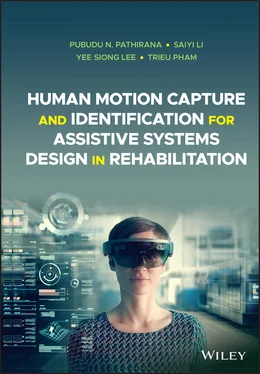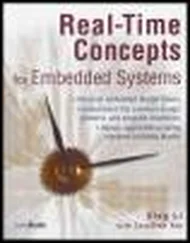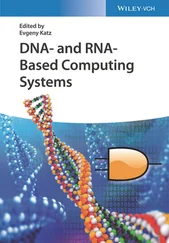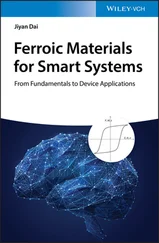1 Cover
2 Title Page Human Motion Capture and Identification for Assistive Systems Design in Rehabilitation Pubudu N. Pathirana Saiyi Li Yee Siong Lee Trieu Pham
3 Copyright
4 1 Introduction1.1 Human Body – Kinematic Perspective 1.2 Musculoskeletal Injuries and Neurological Movement Disorders 1.3 Sensors in Telerehabilitation 1.4 Model‐based State Estimation and Sensor Fusion 1.5 Human Motion Encoding in Telerehabilitation 1.6 Patients' Performance Evaluation
5 2 Kinematic Performance Evaluation with Non‐wearable Sensors2.1 Introduction 2.2 Fusion 2.3 Encoder 2.4 ADL Kinematic Performance Evaluation 2.5 Summary
6 3 Biokinematic Measurement with Wearable Sensors3.1 Introduction 3.2 Introduction to Quaternions 3.3 Wahba's Problem 3.4 Quaternion Propagation 3.5 MARG (Magnetic Angular Rates and Gravity) Sensor Arrays‐based Algorithm 3.6 Model‐based Estimation of Attitude with IMU Data 3.7 Robust Optimisation‐based Approach for Orientation Estimation 3.8 Implementation of the Orientation Estimation 3.9 Computer Simulations 3.10 Experimental Setup 3.11 Results and Discussion 3.12 Conclusion
7 4 Capturing Finger Movements4.1 Introduction 4.2 System Overview 4.3 Accuracy Improvement of Total Active Movement and Proximal Interphalangeal Joint Angles 4.4 Simulation 4.5 Trial Procedure 4.6 Results 4.7 Discussions 4.8 Approaching Finger Movement with a New Perspective 4.9 Reachable Space 4.10 Boundary of the Reachable Space 4.11 Area of the Reachable Space 4.12 Experiments 4.13 Results and Discussion 4.14 Conclusion and Future Work
8 5 Non‐contact Measurement of Respiratory Function via Doppler Radar5.1 Introduction 5.2 Fundamental Operation of Microwave Doppler Radar 5.3 Signal Processing Approach 5.4 Common Data Acquisitions Setup 5.5 Capturing the Dynamics of Respiration 5.6 Capturing Special Breathing Patterns 5.7 Removal of Motion Artefacts from Doppler Radar‐based Respiratory Measurements 5.8 Separation of Doppler Radar‐based Respiratory Signatures
9 6 Appendix6.1 Static Estimators 6.2 Model‐based Estimators 6.3 Particle Filter
10 Bibliography
11 Index
12 End User License Agreement
1 Chapter 1 Table 1.1 Examples of musculoskeletal injuries in joints of the upper extremi... Table 1.2 Examples of musculoskeletal injuries in joints of the lower extremi... Table 1.3 Comparison of basic technical specifications between two versions o...
2 Chapter 2 Table 2.1 Example human movements.Table 2.2 Comparison (in the presence of missing information) of accuracy and...Table 2.3 Sensor motion types.Table 2.4 Comparison between SG and LS.Table 2.5 Shape and dynamics for four motions. In each left figure, the colou...Table 2.6 Parameters used by filters to process trajectories with the tempora...Table 2.7 The comparison of curvatures and torsions for two trajectories inde...Table 2.8 Trajectories and decomposition of complex motions. In each top figu...Table 2.9 The definition of three kinematic severity levels of involuntary mo...Table 2.10 Parameters used to simulate two groups of trajectories. These two ...Table 2.11 Demographic data of subjects.Table 2.12 Cohen's kappa (  ) between various automated approaches and the hum...
) between various automated approaches and the hum...
3 Chapter 3Table 3.1 Averaged RMSE error in the angle estimation for arm exercises in co...
4 Chapter 4Table 4.1 Number of configurations for six groups of TAM.Table 4.2 Clinical significance between the proposed system and universal gon...Table 4.3 The internal reliability of the proposed system.Table 4.4 Internal clinical significance of the proposed system and the unive...Table 4.5 Time of measurement per joint.Table 4.6 Normal active ROM of a finger according to the American Society for...Table 4.7 Task‐specific positions of the joints of the hand: fingers.Table 4.8 Range of movement of participants 6, 7 and 10.Table 4.9 Comparison of execution time between the explicit method and kinema...Table 4.10 Reachable space areas computed by the Scan‐line Fill method (SLF) ...
5 Chapter 5Table 5.1 Quantitative evaluation of the Doppler radar signal with the refere...Table 5.2 Doppler radar signals from various types of breathing scenarios.Table 5.3 Polynomial modelling and DTW performance evaluation.Table 5.4 Evaluation of Doppler radar measurements with the respiration belt ...Table 5.5 Evaluation of Doppler radar measurements compared to respiration be...Table 5.6 Coefficient comparison on Doppler radar signal with spirometer.Table 5.7 Evaluation of a DWT approximation component and an FIR LPF output s...Table 5.8 Performance evaluation on five additional subjects with different m...Table 5.9 Performance evaluation on FastICA using different non‐linearity g fu...Table 5.10 Non‐linearity of the g function.Table 5.11 Performance evaluation on different BSS algorithms separated sourc...
1 Chapter 1 Figure 1.1 The demonstration of the passive and active locomotor system. Sou... Figure 1.2 Functional description of the brain motor cortex. Figure 1.3 Appearance and components of Kinect version 1. Source: Evan‐Amos,... Figure 1.4 The pinhole camera model of Kinect version 1 [373]. Source: From ... Figure 1.5 An example of the projected pattern of bright spots on an object ... Figure 1.6 Appearance of Kinect version 2. Source: Evan‐Amos, Image taken fr... Figure 1.7 The physiotherapist monitoring the exercise on his patient remote... Figure 1.8 Pictures of animals. Sources: (a) Xsens; (b) Amazon; (c) MotionNo... Figure 1.9 Locations of five sensors worn by a subject. Source: Cancela et a ... Figure 1.10 Pictures of animals. Source: Durfee et al . [102]. © 2009, ASME.... Figure 1.11 Marker‐based hand tacking system. Source: Cordella et al . [78].... Figure 1.12 The process of predicting clinical scores from 14 features.
2 Chapter 2 Figure 2.1 Virtual human mimicking the movements of a real human with data c... Figure 2.2 (a) Four instances where the two Kinect systems may have missing ... Figure 2.3 Information theoretic assessment of Kinect ©orientation. Figure 2.4 Filter performance improvement against multiple Kinects ©sub... Figure 2.5 The relationship between  , α and M in the cases with and wi... Figure 2.6 Experimental setup: Vicon and Multi‐Kinect ©system. Source: ... Figure 2.7 Averaged RMSEs (
, α and M in the cases with and wi... Figure 2.6 Experimental setup: Vicon and Multi‐Kinect ©system. Source: ... Figure 2.7 Averaged RMSEs (  ,
,  ) over the same type of exercises conducted b... Figure 2.8 Averaged relative improvement percentages (
) over the same type of exercises conducted b... Figure 2.8 Averaged relative improvement percentages (  ,
,  ) of multi‐Kinect ©... Figure 2.9 Errors of two‐Kinect ©fusion with missing data. The temporal...Figure 2.10 Cloud‐based exercise monitoring and performance assessment with ...Figure 2.11 Average RMSE and performance measures of two Kinect‐fusions with...Figure 2.12 Three‐level syntactic description framework for building languag...Figure 2.13 Shape model. Here the locus of points in the 2D κ ‐ τ sp...Figure 2.14 Dynamic model. Here the speed along the trajectory, v , is indexe...Figure 2.15 Three motions used in experiments of this work. (a, b) Linear mo...Figure 2.16 Two helical trajectories with the same orientation and shape, bu...Figure 2.17 Shape models: (a) for the trajectory in Figure 2.16(a) and (b) f...Figure 2.18 Dynamic models: (a) for the trajectory in Figure 2.16(a), (b) fo...Figure 2.19 Examples of commonly used techniques with features considered fo...Figure 2.20 A diagrammatic view of the experimental setup.Figure 2.21 Real‐data experiment setup image. The top image shows the setup ...Figure 2.22 These three graphs show trajectories in three levels. The left o...Figure 2.23 The smoothness level of trajectories, which is represented by on...Figure 2.24 The metric given by these approaches tends to illustrate the con...Figure 2.25 Sensitivity comparison of the five approaches with respect to th...Figure 2.26 Robustness comparison of the five approaches with respect to the...Figure 2.27 Examples of trajectories (first three rows), shape models, inclu...Figure 2.28 The distributions of durations utilised to finish the reaching t...
) of multi‐Kinect ©... Figure 2.9 Errors of two‐Kinect ©fusion with missing data. The temporal...Figure 2.10 Cloud‐based exercise monitoring and performance assessment with ...Figure 2.11 Average RMSE and performance measures of two Kinect‐fusions with...Figure 2.12 Three‐level syntactic description framework for building languag...Figure 2.13 Shape model. Here the locus of points in the 2D κ ‐ τ sp...Figure 2.14 Dynamic model. Here the speed along the trajectory, v , is indexe...Figure 2.15 Three motions used in experiments of this work. (a, b) Linear mo...Figure 2.16 Two helical trajectories with the same orientation and shape, bu...Figure 2.17 Shape models: (a) for the trajectory in Figure 2.16(a) and (b) f...Figure 2.18 Dynamic models: (a) for the trajectory in Figure 2.16(a), (b) fo...Figure 2.19 Examples of commonly used techniques with features considered fo...Figure 2.20 A diagrammatic view of the experimental setup.Figure 2.21 Real‐data experiment setup image. The top image shows the setup ...Figure 2.22 These three graphs show trajectories in three levels. The left o...Figure 2.23 The smoothness level of trajectories, which is represented by on...Figure 2.24 The metric given by these approaches tends to illustrate the con...Figure 2.25 Sensitivity comparison of the five approaches with respect to th...Figure 2.26 Robustness comparison of the five approaches with respect to the...Figure 2.27 Examples of trajectories (first three rows), shape models, inclu...Figure 2.28 The distributions of durations utilised to finish the reaching t...
Читать дальше

 ) between various automated approaches and the hum...
) between various automated approaches and the hum... , α and M in the cases with and wi... Figure 2.6 Experimental setup: Vicon and Multi‐Kinect ©system. Source: ... Figure 2.7 Averaged RMSEs (
, α and M in the cases with and wi... Figure 2.6 Experimental setup: Vicon and Multi‐Kinect ©system. Source: ... Figure 2.7 Averaged RMSEs (  ,
,  ) over the same type of exercises conducted b... Figure 2.8 Averaged relative improvement percentages (
) over the same type of exercises conducted b... Figure 2.8 Averaged relative improvement percentages (  ,
,  ) of multi‐Kinect ©... Figure 2.9 Errors of two‐Kinect ©fusion with missing data. The temporal...Figure 2.10 Cloud‐based exercise monitoring and performance assessment with ...Figure 2.11 Average RMSE and performance measures of two Kinect‐fusions with...Figure 2.12 Three‐level syntactic description framework for building languag...Figure 2.13 Shape model. Here the locus of points in the 2D κ ‐ τ sp...Figure 2.14 Dynamic model. Here the speed along the trajectory, v , is indexe...Figure 2.15 Three motions used in experiments of this work. (a, b) Linear mo...Figure 2.16 Two helical trajectories with the same orientation and shape, bu...Figure 2.17 Shape models: (a) for the trajectory in Figure 2.16(a) and (b) f...Figure 2.18 Dynamic models: (a) for the trajectory in Figure 2.16(a), (b) fo...Figure 2.19 Examples of commonly used techniques with features considered fo...Figure 2.20 A diagrammatic view of the experimental setup.Figure 2.21 Real‐data experiment setup image. The top image shows the setup ...Figure 2.22 These three graphs show trajectories in three levels. The left o...Figure 2.23 The smoothness level of trajectories, which is represented by on...Figure 2.24 The metric given by these approaches tends to illustrate the con...Figure 2.25 Sensitivity comparison of the five approaches with respect to th...Figure 2.26 Robustness comparison of the five approaches with respect to the...Figure 2.27 Examples of trajectories (first three rows), shape models, inclu...Figure 2.28 The distributions of durations utilised to finish the reaching t...
) of multi‐Kinect ©... Figure 2.9 Errors of two‐Kinect ©fusion with missing data. The temporal...Figure 2.10 Cloud‐based exercise monitoring and performance assessment with ...Figure 2.11 Average RMSE and performance measures of two Kinect‐fusions with...Figure 2.12 Three‐level syntactic description framework for building languag...Figure 2.13 Shape model. Here the locus of points in the 2D κ ‐ τ sp...Figure 2.14 Dynamic model. Here the speed along the trajectory, v , is indexe...Figure 2.15 Three motions used in experiments of this work. (a, b) Linear mo...Figure 2.16 Two helical trajectories with the same orientation and shape, bu...Figure 2.17 Shape models: (a) for the trajectory in Figure 2.16(a) and (b) f...Figure 2.18 Dynamic models: (a) for the trajectory in Figure 2.16(a), (b) fo...Figure 2.19 Examples of commonly used techniques with features considered fo...Figure 2.20 A diagrammatic view of the experimental setup.Figure 2.21 Real‐data experiment setup image. The top image shows the setup ...Figure 2.22 These three graphs show trajectories in three levels. The left o...Figure 2.23 The smoothness level of trajectories, which is represented by on...Figure 2.24 The metric given by these approaches tends to illustrate the con...Figure 2.25 Sensitivity comparison of the five approaches with respect to th...Figure 2.26 Robustness comparison of the five approaches with respect to the...Figure 2.27 Examples of trajectories (first three rows), shape models, inclu...Figure 2.28 The distributions of durations utilised to finish the reaching t...










